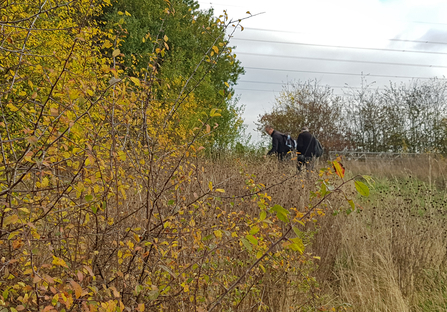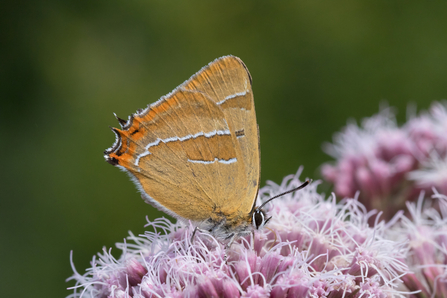Volunteers from the West Midlands branch of Butterfly Conservation have been working with land managers, including Worcestershire Wildlife Trust, to help brown hairstreak butterflies move into new areas. The small and elusive butterflies only lay their eggs on young blackthorn; the caterpillars feed on the young buds of the plant when they hatch in spring.
In the 1970s one of the butterfly’s few national populations was confined to Grafton Wood, now jointly owned by the Trust and Butterfly Conservation, in the east of Worcestershire. Since then, volunteers have worked with land managers to manage their hedgerows more sensitively, cutting on a three year rotation in order to allow the eggs to survive winter.
This has allowed the butterfly to expand north to Redditch, south to Pershore and across the border into Warwickshire. It was thought that the M5 was a barrier to further expansion to the west.


